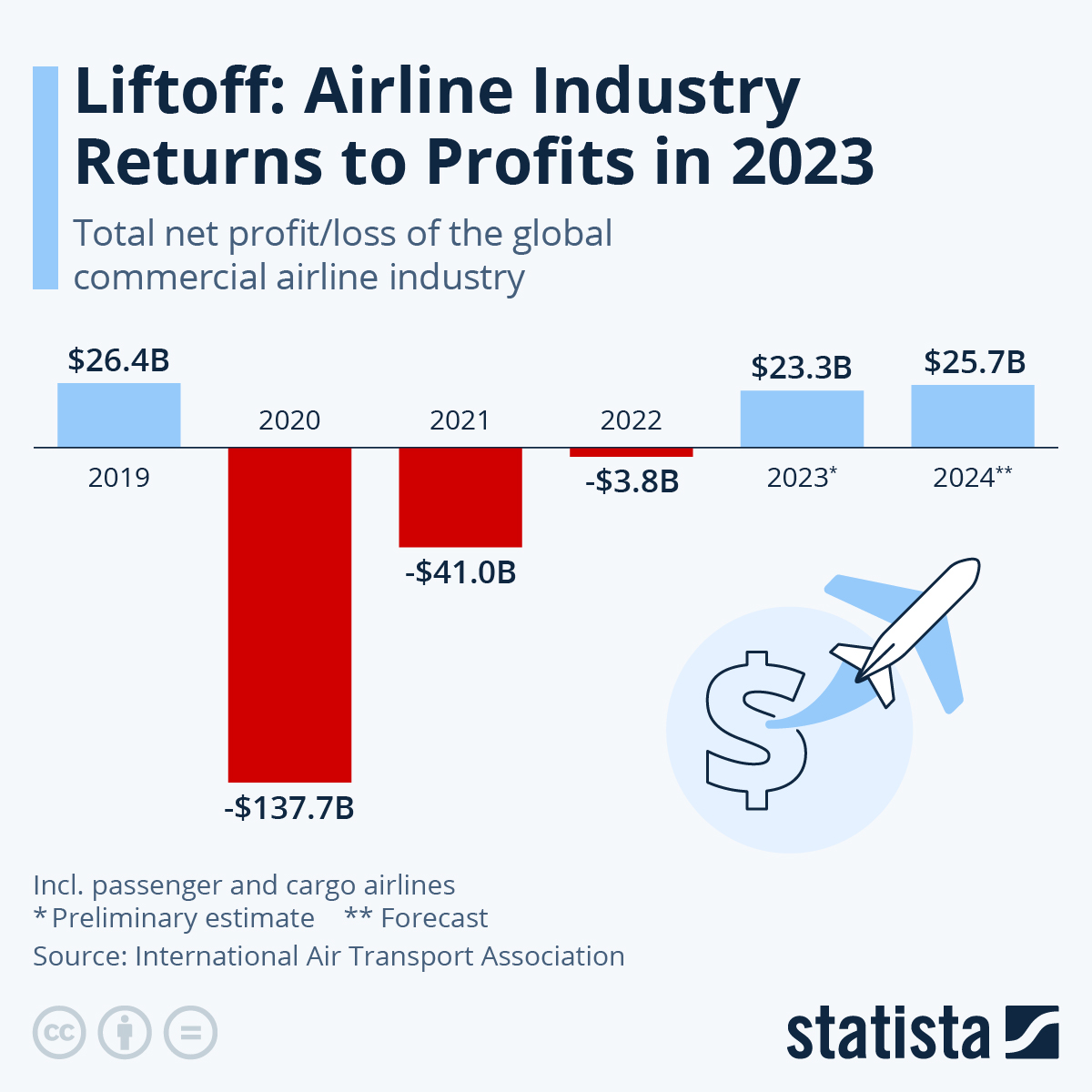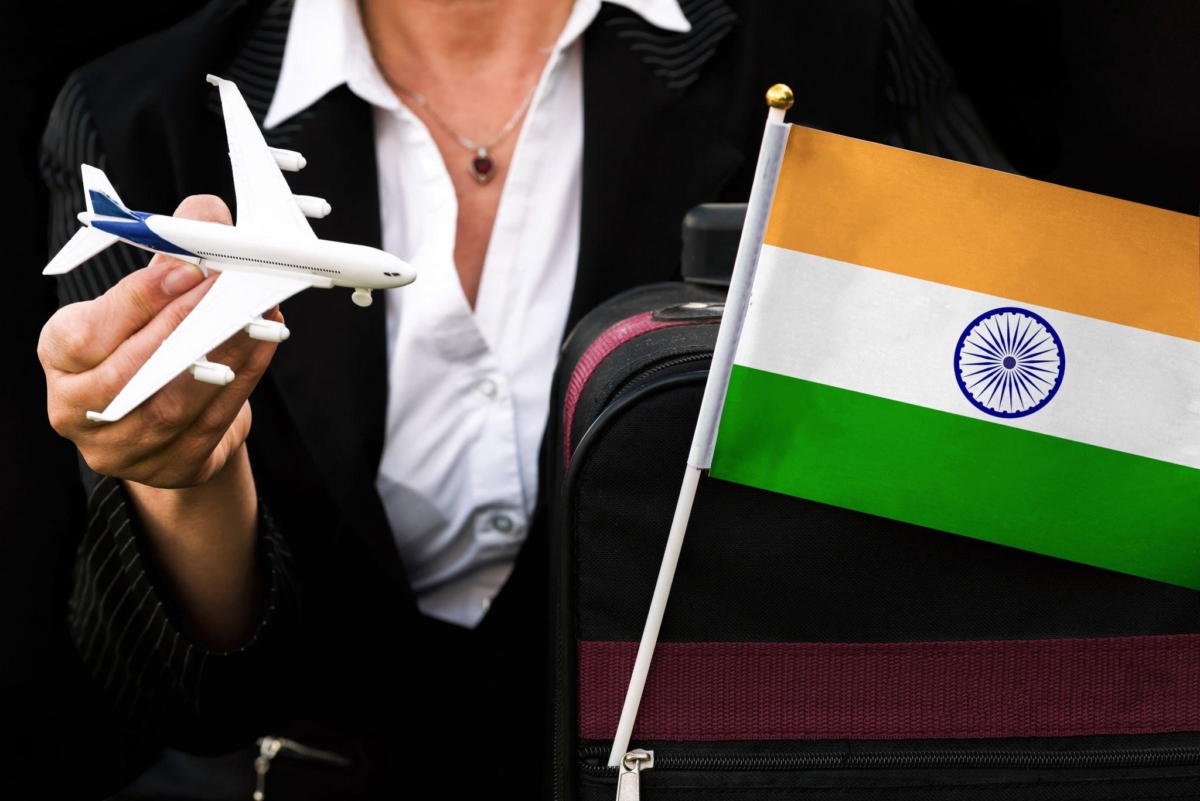The Indian aviation sector is gearing up for a stellar performance in 2024, with the International Air Transport Association (IATA) forecasting record-breaking profits for the global airline industry. The projections indicate a net profit margin of 2.7%, translating to an impressive $25.7 billion, showcasing a substantial improvement over the previous year. As the world emerges from the shadows of the pandemic, the Indian aviation industry is poised to play a pivotal role in the global economic recovery. Adding to the optimism, private airliner IndiGo made history on December 18 by becoming the first Indian airline to carry an unprecedented 100 million passengers in a single calendar year.
Global Aviation Landscape
The IATA’s latest report unveils a positive trajectory for the aviation sector on a global scale. With the net profit margin expected to reach 2.7% in 2024, the industry is anticipated to witness a slight uptick from the 2.6% recorded in 2023. Total revenues are forecasted to hit an all-time high of $964 billion, reflecting a robust year-over-year growth of 7.6%. Operating profits for the airline industry are projected to surge to $49.3 billion in 2024, up from $40.7 billion in 2023.

Passenger Boom and Cargo Operations: India at the Forefront
India, with its burgeoning middle class and increasing connectivity, is set to make substantial contributions to the global aviation boom. The report estimates a historic high of 4.7 billion people traveling in 2024, surpassing the pre-pandemic level of 4.5 billion recorded in 2019. This surge in demand for air travel aligns with IATA’s November 2023 passenger polling data, where 44% of Indian travelers expressed their intent to travel more in the next 12 months.
Cargo volumes are also set to play a pivotal role in the industry’s growth, with expectations of reaching 61 million tonnes in 2024. India’s strategic location and improving logistics infrastructure position it favorably to capitalize on the flourishing cargo operations, further fueling the industry’s profitability.
Regional Performance: A Mixed Bag for Asia Pacific
While North America, Europe, and the Middle East are expected to post net profits in both 2023 and 2024, Asia Pacific is poised to join this elite group in 2024. The regional net profit is projected to be $1.1 billion, with a modest margin of 0.5%. Despite facing challenges in international travel due to persistent restrictions, some of the region’s main domestic markets, including China, Australia, and India, are recovering quickly from the pandemic.
China, having eliminated the last of its international travel restrictions in mid-2023, is on the path to regaining its pre-pandemic levels, with international travel still 40% below the 2019 figures. The Asia Pacific region is expected to post a small loss in 2023, turning the tide to a profit in 2024, and showcasing resilience and adaptability.
Challenges on the Horizon: A Cautionary Tale
Despite the optimistic outlook, the aviation industry remains vulnerable to various challenges. Supply chain issues continue to impact global trade and business, directly affecting airlines. Unforeseen maintenance issues on aircraft and engine types, along with delays in the delivery of aircraft parts, are limiting capacity expansion and fleet renewal, raising concerns about sustainable growth.
On the regulatory front, airlines could face rising costs of compliance, additional expenses related to passenger rights regimes, regional environment initiatives, and accessibility requirements. As the industry strives to bounce back, the delicate balance between demand, supply, and regulatory constraints poses potential risks to the profitability surge.
Environmental Initiatives: A Balancing Act for Sustainable Growth
The aviation industry is gearing up to address environmental concerns by increasing the use of Sustainable Aviation Fuels (SAF) and carbon credits. In India, where environmental sustainability is gaining prominence, this shift towards greener practices aligns with the nation’s commitment to combat climate change. The use of SAF is expected to rise to 0.53% of airlines’ total fuel consumption in 2024, adding USD 2.4 billion to the fuel bill.
The Carbon Offsetting and Reduction Scheme for International Aviation (CORSIA), a global market-based carbon offsetting mechanism, is estimated to incur costs of $1 billion in 2024. As India pushes towards a sustainable future, these initiatives resonate with the growing environmental consciousness of its populace.
Government’s Role: Navigating the Skies Ahead
The Indian government’s role in supporting the aviation industry will be critical to sustaining the projected growth. Addressing regulatory challenges, ensuring a conducive business environment, and facilitating infrastructure development are key areas where government intervention can significantly impact the industry’s trajectory.
While the IATA report provides an optimistic outlook for the Indian aviation sector, stakeholders emphasize the importance of a collaborative approach between the industry and the government to overcome challenges and propel sustained growth.
Passenger Perspective: Flying High on Satisfaction
Beyond the numbers, the report sheds light on the satisfaction levels of air travelers. According to a public opinion poll conducted in 14 countries with 6,500 respondents who have taken at least one trip in the last year, 97% of travelers expressed satisfaction with their travel experiences. In India, where air travel has become increasingly accessible, 88% agreed that air travel makes their lives better, and 80% believe it offers good value for money.
The poll also reflects the confidence of Indian travelers in the aviation industry’s commitment to sustainability. 84% believe that achieving net zero emissions by 2050 is the right goal, 79% are confident that sustainable flying is achievable, and 78% agree that aviation leaders are taking the climate challenge seriously.
IndiGo’s Historic Achievement: A Proud Moment for India
In a separate milestone for the Indian aviation industry, IndiGo, the nation’s preferred carrier, achieved a historic feat by becoming the first Indian airline to transport 100 million passengers in a single calendar year. This announcement, made on December 18, places IndiGo among the elite global carriers, solidifying its position among the 10 largest airlines in the world by passenger traffic.
Quoting IndiGo’s official statement, Hindustan Times reported, “IndiGo, India’s preferred carrier has created history by becoming the first Indian airline to carry 100 million passengers in a single calendar year. With this achievement, it has joined a select club of global carriers to operate on such a scale. This development further cements IndiGo’s standing among the 10 largest airlines in the world by passenger traffic.”
Pieter Elbers, Chief Executive Officer of IndiGo, expressed his gratitude, stating, “This landmark figure is the result of the love and trust shown by our customers and the hard work and passion of all IndiGo colleagues.”
As the Indian aviation industry braces for 2024, the soaring profits and optimistic projections indicate a promising era ahead. With a burgeoning middle class, increasing connectivity, and a government poised to support the industry’s growth, India is set to emerge as a key player in the global aviation landscape. However, with challenges on the horizon, a collaborative effort between industry stakeholders and the government is essential to ensure sustainable and resilient growth in the years to come. The skies ahead are not without turbulence, but the Indian aviation industry is well-equipped to navigate through, reaching new heights and setting new records in the process.

